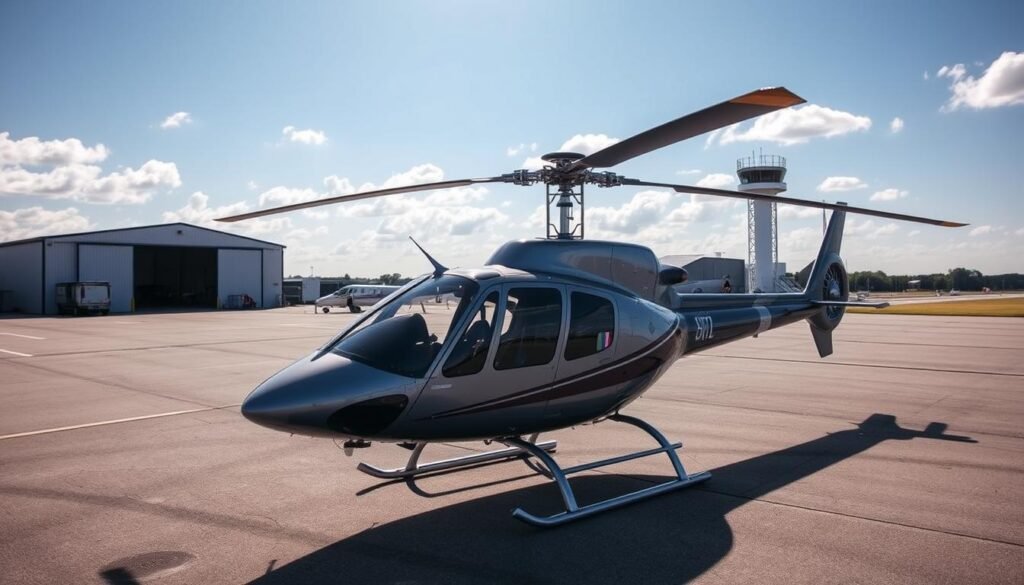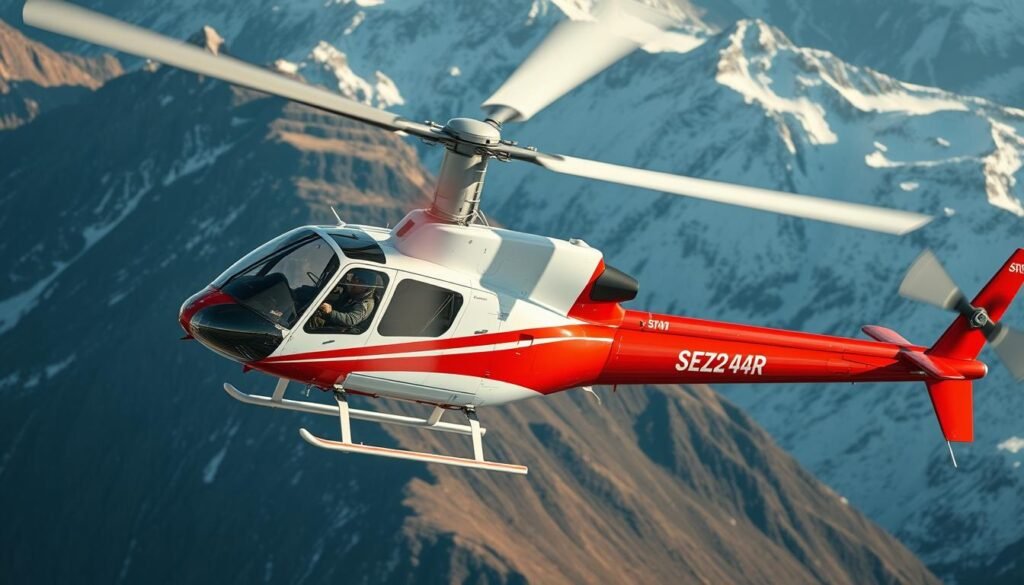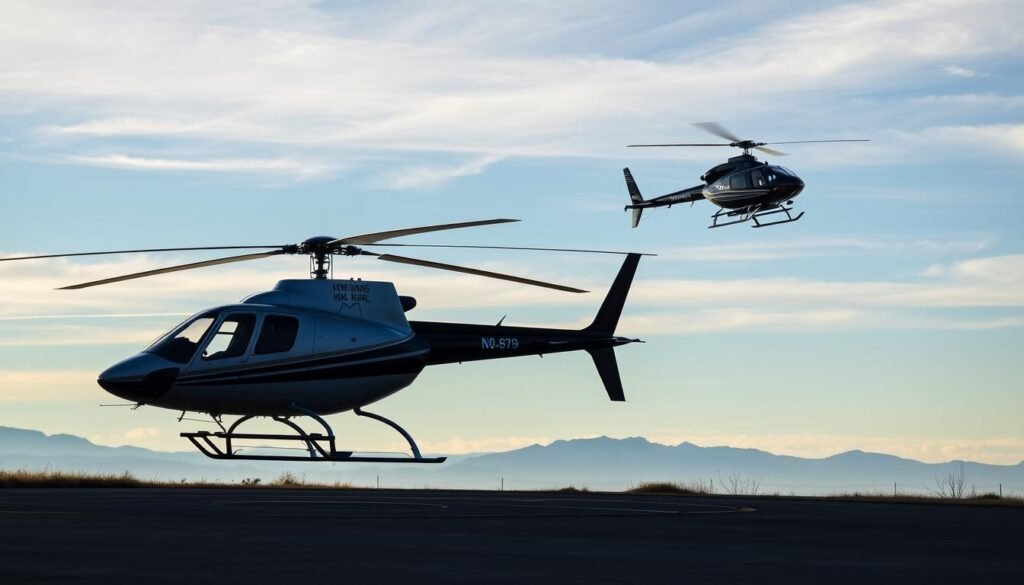Entry-level helicopter pilots typically earn between $45,000 and $70,000 annually, depending on mission type, employer, and region. Tour and flight school roles often start near the lower end, while EMS, utility, and offshore positions may offer higher base pay with added premiums for night shifts, standby duty, and mission complexity.
These early-career benchmarks reflect more than just flight hours—they’re shaped by aircraft type, certifications, and employer expectations. For a full breakdown of salary ranges, career stages, and credentials that boost pay, see the Helicopter Pilot Salary Guide.
Key Takeaways
- Expect wide variation: averages hide big gaps between EMS, corporate, and offshore work.
- Flight instructor and tour roles are common first steps with modest starting pay.
- Location and logged hours drive quick jumps in pilot earnings.
- Use sector data to choose pathways that match your dream and lifestyle goals.
- National averages help set expectations, but role details determine real income.
What “Entry Level” Means for Helicopter Pilots in the United States Today
For many new commercial rotorcraft graduates, early roles focus on steady flight time, mentorship, and foundational experience. Entry-level typically refers to aviators who’ve recently earned a commercial rotorcraft certificate and are building hours to qualify for higher-paying positions.
Common starting points include CFI/CFII instructor work, scenic tour routes, and pipeline patrols—roles that feed into EMS, offshore, or public-safety operations. Employers prioritize strong training fundamentals, a safety-first mindset, and professional conduct over raw flight-hour totals. Early jobs are chosen to maximize exposure—teaching maneuvers, flying local tours, or supporting basic utility work—to accelerate skill and experience in the first year. For a closer look at how instructor roles support hour-building and career progression, see Instructor Pay for Helicopter Pilots: Teaching the Next Generation.
- Many start in instructing to build predictable hours and mentorship.
- Some markets require minimum flight time before hiring into EMS or law-enforcement operations.
- Military entry figures (~$60,000–$65,000) give a useful benchmark for trainee-level benefits and duties.
| Common early positions | Primary goal | Typical first-year focus |
|---|---|---|
| CFI / CFII | Build structured flight hours | Instruction, procedures, mentoring |
| Tour operator | High flight exposure | Customer ops, local routes, consistency |
| Utility / pipeline | Operational experience | Basic external load, short missions |
“The shift from student to professional happens when you log time safely, learn SOPs, and show readiness for advanced duties.”
Structured roles often offer steady schedules, mentoring, and clear paths up the ladder. For deeper data on pay and career stages, see a helpful pilot compensation guide and a practical overview of career stages and pay.
Entry-Level Helicopter Pilot Salary: National Ranges and What New Pilots Can Expect
How much you make in year one hinges on the type of work, aircraft, and the hours you already hold.
New helicopter pilot earnings usually start below the U.S. average of about $94,000. Most beginners land inside a common first-year range that reflects lower experience and modest aircraft responsibilities.
EMS roles can pay roughly $70,000–$90,000 but often require more time before hiring. For a deeper look at how life-saving missions shape compensation, see EMS & Medevac Helicopter Pilot Salaries: What Life-Saving Roles Pay.
Corporate work may exceed $120,000 for experienced crews, and offshore oil and gas averages near $208,000 at senior levels. For a breakdown of business-critical aviation pay, visit Corporate & Offshore Helicopter Pilot Salaries: Flying for Big Business.
High-cost states such as California, Texas, and New York tend to offer higher starting ranges because demand and living costs push pay up.

How Flight Hours and Aircraft Type Affect Initial Pay
Flight hours directly influence starting offers. Being close to employer minimums and insurance thresholds gives new pilots more negotiating leverage and access to better roles.
Aircraft type matters too. Time in turbine machines is significantly more valuable than piston hours for advanced missions and often yields higher starting rates.
New helicopter pilot earnings typically begin below the national average, but location and demand can lift starting pay quickly. Flight hours, aircraft type, and mission profile all determine first-year salary potential.
“Expect pay to rise as you add hours and experience; operators often review compensation once you prove consistent safety and reliability.”
| Operation Type | Common First-Year Range (USD) | Key Hiring Factors |
| CFI / Tour | $35,000 – $65,000 | Hours, teaching ability, local demand |
| EMS / Corporate (Entry) | $70,000 – $120,000 | Experience, instrument time, aircraft type |
| Offshore / Specialized | $120,000 – $208,000+ | Turbine time, certifications, high-demand markets |
Role-by-Role Starting Pay: Where New Helicopter Pilots Begin Earning
Starting pay varies widely depending on the role, aircraft, and mission type. New pilots often begin in scenic tours, flight instruction, or utility support—roles that prioritize hour-building and safety fundamentals over high compensation.
- Tour and charter pilots typically earn between $35,000 and $65,000 annually, with seasonal demand and location shaping pay. For a breakdown of leisure-sector earnings, see Tour & Charter Helicopter Pilot Pay: What You’ll Make Flying for Leisure.
- Flight instructors often start near $40,000–$60,000, earning steady income while building hours toward turbine or EMS roles.
- EMS and corporate entry roles may offer $70,000–$120,000 depending on aircraft type, instrument time, and regional demand.
- Offshore and specialized missions can exceed $120,000 at entry, especially for pilots with turbine time and advanced certifications.
Each role sets different expectations for experience, scheduling, and mission complexity. Starting pay reflects not just hours—but readiness, professionalism, and the ability to grow into higher-responsibility missions.

Helicopter Pilot Starting Pay: Baseline for New Commercial Pilots
Baseline roles prioritize safe procedures, steady flight time, and professional growth. Expect conservative pay in the first year as you demonstrate skill, reliability, and adaptability.
First-Year Rotorcraft Salary for Certified Flight Instructors (CFI/CFII)
Many new pilots begin as certified flight instructors to build hours quickly. Instructor roles offer predictable schedules, mentorship opportunities, and consistent flight time. For a breakdown of instructor compensation and career progression, see Instructor Pay for Helicopter Pilots: Teaching the Next Generation.
New Helicopter Pilot Earnings in Emergency Medical Services Pipelines
EMS pathways often start with support or co-crew roles while pilots build time toward minimums. Once qualified, EMS compensation typically ranges from $70,000 to $90,000, with additional premiums for night shifts and standby duty.
Law Enforcement and Search and Rescue Trainee Pay Considerations
Public-safety tracks begin with agency-sponsored training and incremental responsibilities. Pay increases as pilots complete mission-ready checklists and qualify for search and rescue operations.
Tour Pilot Beginner Pay in High-Demand Tourist Operations
Tour jobs vary by season and geography. High-demand destinations—like Alaska, Hawaii, or the Grand Canyon—can offer steadier income and faster transitions to turbine aircraft. Scenic flying also builds PIC time and customer-facing experience.
Track your hours, insurance thresholds, and feedback from check airmen to advance. Role differences stem from aircraft complexity, operational risk, and experience required.
| Role | Typical First-Year Range | Key Hiring Factor |
| CFI / CFII | $35,000 – $65,000 | Instruction time |
| EMS (Qualified) | $70,000 – $90,000 | Medical operations experience |
| Tour Operations | $35,000 – $70,000 | Location and season |
“Start where you can build hours safely; progression follows consistent performance.”
Key Factors That Shape an Entry-Level Helicopter Pilot Salary
Pay for new rotorcraft roles depends on several measurable factors that shape early earnings—chief among them are flight hours, aircraft type, and employer expectations.
Seniority, Experience, and Early Flight Hours Logged
Early flight hours help pilots meet operator and insurance minimums. Time in turbine aircraft carries extra weight, especially when employers evaluate readiness for complex missions. As pilots demonstrate safe, reliable performance, compensation reviews and raises tend to follow quickly.
Employer Type and Operational Demands
Employer type plays a major role in shaping entry-level pay. EMS positions typically offer $70,000–$90,000 once minimums are met, while corporate roles may exceed $120,000 for qualified crews. Offshore oil and gas operations—especially with companies like Bristow—can reach $208,000+ at senior levels. For a breakdown of offshore charter compensation, see Bristow Helicopters Salary Breakdown: Offshore Charter Pilot Pay.

Geographic Location, Cost of Living, and Career Acceleration
Location plays a major role in shaping helicopter pilot starting pay. High-demand states like California, Texas, and New York often post stronger entry offers due to regional demand, cost of living, and mission density. Strategic relocation or seasonal targeting can accelerate your path from entry-level pay to mid-tier compensation.
Specializations and Certifications That Move the Range
Targeted training—night vision goggles (NVG), external-load operations, mountain flying, and turbine transition—raises competitiveness and can shift your compensation earlier than seniority alone. These credentials unlock access to higher-paying missions and specialized roles. For example, firefighting and rescue pilots often earn premiums for risk, readiness, and certification depth.
Shifts, Schedules, and Mission Risk
On-call shifts, night operations, and high-risk missions typically include pay premiums. Weigh compensation against fatigue, lifestyle, and long-term sustainability. Roles in EMS, SAR, and utility often demand flexibility but reward reliability and mission readiness.
“Combine the right industry focus, location strategy, and targeted certifications to tighten the timeline from initial pay to better offers.”
| Factor | How It Affects Pay | Practical Action |
| Seniority / Hours | Primary driver of raises | Log turbine hours; track insurance thresholds |
| Employer Type | Large pay variation (EMS, corporate, offshore) | Target industries with clear hiring minimums |
| Location | Higher in CA, TX, NY | Relocate or target seasonal markets |
| Certifications | Boosts competitiveness and pay | Train for NVG, external load, mountain ops |
For national pay benchmarks across aviation roles, visit the Bureau of Labor Statistics.
Fastest Ways to Increase Your Starting Helicopter Pilot Pay
If you want to lift your early take-home, focus on strategies that accelerate flight time and build marketable skills quickly.
Build Time as a Certified Flight Instructor (CFI/CFII)
Instructor work offers predictable schedules, sharpens fundamentals, and helps new pilots reach turbine minimums faster. Many CFI/CFII routes allow you to accumulate hours while mentoring others—making you more competitive for EMS, offshore, and corporate roles. For a breakdown of instructor compensation and hour-building strategy, see Instructor Pay for Helicopter Pilots: Teaching the Next Generation.

Stack Niche Skills for Demand-Driven Roles
Certifications like night vision goggles (NVG), external-load operations, and mountain flying make you stand out in EMS, utility, and offshore sectors—where specialized experience is often mandatory. These ratings not only boost your market value but also expand your eligibility for turbine aircraft roles. For a breakdown of how employer type and aircraft complexity shape compensation, see Corporate & Offshore Helicopter Pilot Salaries: Flying for Big Business.
Target Industries with Stronger Compensation and Benefits
Corporate transport and offshore support trend higher in pay and often include travel stipends or relocation bonuses. EMS roles become competitive once you meet hour minimums and mission-readiness standards. For structured training programs and career guidance, visit Helicopter Association International: Training & Career Resources.
Treat each lesson as targeted training for your next job.
Track flight hours weekly to hit employer minimums sooner.
Ask about tuition assistance and upgrade pathways that speed progression.
| Action | Impact | Timeline |
| CFI Time | More hours, stronger fundamentals | 6–12 months |
| Specialty Ratings | Higher market value | 3–6 months |
| Industry Targeting | Better pay and benefits | Varies |
“Stacking focused experience and certifications is the quickest way to move from starter pay into higher bands.”
For structured courses and guidance on training and pay progression, see this practical resource: training pilot salary.
How Entry Pay Fits into a Broader Helicopter Pilot Career Path
What you earn in year one rarely defines your career—it signals where to focus your next years of training. Entry-level pay is a launchpad, not a ceiling. As you build hours and add ratings, you unlock access to higher-paying roles in EMS, corporate, offshore, and public-safety sectors.
From Early Roles to Chief Pilot or Director of Operations
Many pilots begin as CFIs, using that time to sharpen fundamentals, gain turbine exposure, and build leadership experience. For a breakdown of how instructor roles support long-term advancement, see Instructor Pay for Helicopter Pilots: Teaching the Next Generation.
With 3–7 years of experience and targeted training, pilots often step into chief pilot or director roles—positions that oversee operations, manage crews, and shape safety culture.
Transitioning to Specialized Sectors: EMS, Corporate, Offshore, and VIP
Each sector demands specific hours, certifications, and recurrent training. EMS roles often require NVG proficiency and mission-readiness drills. Corporate and offshore jobs reward turbine time, CRM professionalism, and operational stability. For a breakdown of compensation and expectations in business-critical aviation, see Corporate & Offshore Helicopter Pilot Salaries: Flying for Big Business.

Total Compensation: Base Pay, Bonuses, and Travel or Relocation Benefits
Helicopter pilot compensation goes beyond base salary. Total reward packages often include retirement plans, health insurance, relocation assistance, and performance bonuses—especially in high-demand sectors like EMS, corporate transport, and offshore operations.
When comparing offers, weigh base pay against travel stipends, overtime rates, and non-salary perks. Mission type, employer size, and location all influence the full value of your compensation.
“Treat each assignment as training for the next job; mission-relevant flight experience opens specialized interviews.”
| Career Stage | Years | Common Package Elements |
| CFI / Junior Roles | 0–2 | Base pay, mentorship, flight hours |
| Specialized Operator (EMS / Utility) | 2–5 | NVG training, mission pay, insurance |
| Corporate / Offshore / Chief Roles | 5–10+ | Higher base, bonuses, relocation support, retirement contributions |
For a breakdown of offshore and corporate compensation structures, see Corporate & Offshore Helicopter Pilot Salaries: Flying for Big Business.
To explore how EMS roles reward mission readiness and night operations, visit EMS & Medevac Helicopter Pilot Salaries: What Life-Saving Roles Pay.
Final Thoughts
The right first-year strategy makes steady growth predictable and measurable. Start by choosing roles that build safe flight time and marketable ratings. In year one, instructing and tour work often offer the fastest hour accumulation—opening pathways into EMS, corporate, and offshore operations once you meet hiring thresholds.
Keep key U.S. figures in mind:
- National average sits near $94,000
- EMS roles commonly reach $70,000–$90,000 once qualified
- Corporate positions can exceed $120,000
- Offshore averages hover around $208,000
- Military entry typically starts at $60,000–$65,000
Location matters—states like California, Texas, and New York tend to push offers higher due to demand and cost of living.
Always consider total rewards: insurance, retirement, bonuses, travel stipends, and relocation support. Compare the full package—not just base numbers. For a deeper look at compensation benchmarks and career trends, see the Helicopter Pilot Salary Guide.
The aviation world rewards consistency and readiness. Log time, stay current, and pursue the certifications that align with your dream mission. With a clear plan, the pilot jobs you want become reachable—and the rewards follow.



